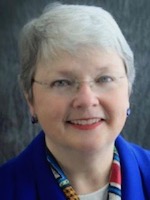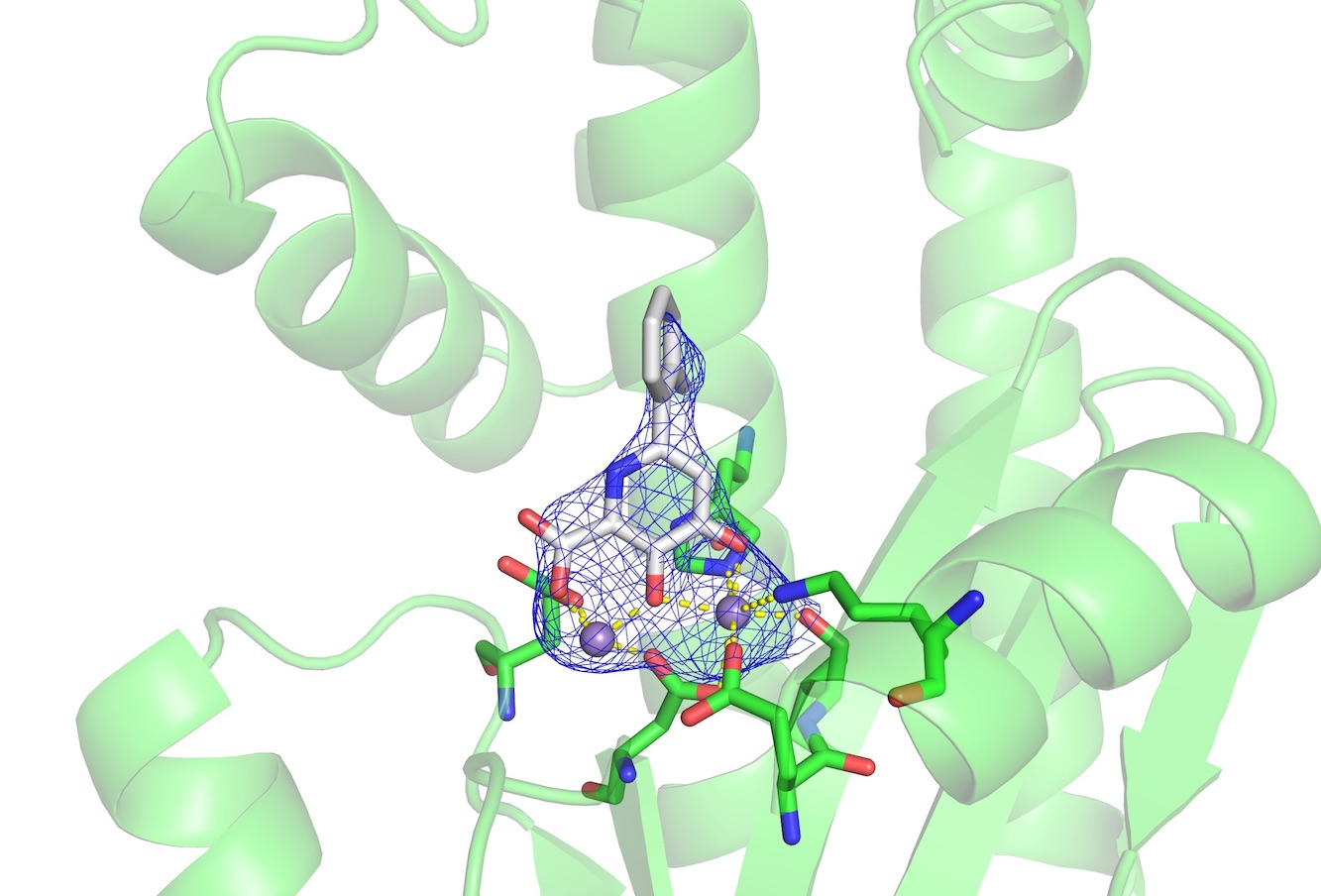Daily Business Report-Feb. 25, 2019
The High-Speed Rail Authority’s own projection is that when fully built out, including extensions to Sacramento and San Diego, the bullet train would reduce auto travel, now nearly a billion miles a day, by scarcely one percent. (Photo: CALmatters)
Commentary
It’s time to derail the train to nowhere
Voters were sold a bill of goods in 2008
By Dan Walters | CALmatters
Gov. Gavin Newsom came close this month to abandoning the state’s misbegotten bullet train project that’s already cost many billions of dollars and demonstrates no signs of becoming viable.
“Let’s be real,” Newsom told legislators in his first State of the State address. “The project as currently planned would cost too much and take too long. There’s been too little oversight and not enough transparency. Right now, there simply isn’t a path to get from Sacramento to San Diego, let alone from San Francisco to L.A.”
The bold – and logical – move would have been to finish what’s under construction in the San Joaquin Valley, fold it into existing Amtrak service and then cancel everything else before it gobbles up even more money. But Newsom couldn’t bring himself to entirely pull the plug on this hot mess.
Voters were sold a bill of goods by former Gov. Arnold Schwarzenegger and the Legislature in a 2008 ballot measure that authorized $9.95 billion in bonds, pegged the cost of the project at $33 billion and promised that it would operate with no subsidies while whisking passengers from San Francisco to Los Angeles in 160 minutes.
Under successor Jerry Brown, the projected cost more than doubled, the state has been unable to attract investors without promising subsidies, changes in the project, such as merging it with regional commuter rail, make the 2:40 travel time impossible, and public sentiment has turned against it.
State Auditor Elaine Howle told the Legislature in December that the High-Speed Rail Authority’s “flawed decision making regarding the start of high-speed rail system construction in the Central Valley and its ongoing poor contract management for a wide range of high-value contracts have contributed to billions of dollars in cost overruns for completing the system.”
The Obama administration awarded California a $3.5 billion grant in 2010 for the valley segment.
The grant required completion by 2017. The deadline was later extended to 2022 but Howle says the latter date won’t be met “unless…construction progresses twice as fast as it has to date,” adding, “Missing the deadline could expose the state to the risk of having to pay back as much as $3.5 billion in federal funds.”
After Newsom’s address, President Donald Trump declared on Twitter: “California has been forced to cancel the massive bullet train project after having spent and wasted many billions of dollars. They owe the Federal Government three and a half billion dollars. We want that money back now. Whole project is a ‘green’ disaster!”
Newsom, of course, rejected the idea, telling legislators, “I’m not interested in sending $3.5 billion in federal funding that was allocated to this project back to Donald Trump.”
However, if a Republican still occupies the White House in 2022 and the San Joaquin portion is still incomplete, as Howle suggests, the state could, indeed, be on the legal hook to repay the grant.
The bullet train also receives 25 percent of proceeds from auctions of greenhouse gas emission allowances on the assumption – fanciful at best – that it would make a major contribution to curbing carbon emissions by diverting travelers from cars and airlines.
However, the High-Speed Rail Authority’s own projection is that when fully built out, including extensions to Sacramento and San Diego, the bullet train would reduce auto travel, now nearly a billion miles a day, by scarcely one percent. That doesn’t come close to justifying 25 percent of cap-and-trade funds, which would be much better spent elsewhere.
It’s time to derail the train to nowhere.
CALmatters is a public interest journalism venture committed to explaining how California’s state Capitol works and why it matters. For more stories by Dan Walters, go to Commentary.
____________________

Native California medicinal plant
may hold promise for treating Alzheimer’s

The medicinal powers of aspirin, digitalis, and the anti-malarial artemisinin all come from plants. A Salk Institute discovery of a potent neuroprotective and anti-inflammatory chemical in a native California shrub may lead to a treatment for Alzheimer’s disease based on a compound found in nature. The research appears in the February 2019 issue of the journal Redox Biology.
“Alzheimer’s disease is a leading cause of death in the United States,” says Senior Staff Scientist Pamela Maher, a member of Salk’s Cellular Neurobiology Laboratory, run by Professor David Schubert. “And because age is a major risk factor, researchers are looking at ways to counter aging’s effects on the brain. Our identification of sterubin as a potent neuroprotective component of a native California plant called Yerba santa (Eriodictyon californicum) is a promising step in that direction.”
Native California tribes, which dubbed the plant “holy herb” in Spanish, have long used Yerba santa for its medicinal properties. Devotees brew its leaves to treat respiratory ailments, fever and headaches; and mash it into a poultice for wounds, sore muscles and rheumatism.
____________________

Guen Garrido Presentation:
Against All Odds, she paid off $68,000 in debt
Guen Garrido is just like many people out there who found themselves buried in student loans, credit card debt, personal loans, and car debt. It became a heavy burden on her, but it felt impossible to tackle and people assured her it was “normal” anyway. It wasn’t until a series of events that turned her life upside down did she finally feel fed up and wanted to do something about it. She started doing research and taking action, and in March 2017, Guen became debt free. Hear her tell her story and the things she did to reach her goal to pay off over $68,000 in 3 years and 3 months. She will appear at the April 5 Leadership Conference of San Diego Women’s Week.
____________________
City’s polystyrene foam and single-use
plastics ordinance now in effect
In an effort to create a cleaner, healthier environment and help achieve Zero Waste goals, the first provisions of the city of San Diego’s Polystyrene Foam and Single Use Plastics Ordinance went into effect on Saturday. The ordinance will be rolled out in phases to allow businesses and other entities time to implement changes with the overall goal of reducing the use of polystyrene foam and single use plastics Citywide.
As part of the initial phase, food vendors within city limits will no longer be permitted to distribute plastic or bioplastic utensils or straws unless requested by the customer. Additionally, all food service ware, coolers, ice chests and pool or beach toys made from polystyrene foam will be prohibited at city facilities (including special events).
Coolers, ice chests and similar containers; pool and beach toys; and dock floats, mooring buoys, and anchor or navigation markers made from polystyrene foam will no longer be legally sold or distributed in the city unless they are fully encased in another material.
The next phase of the ordinance goes into effect on May 24, 2019, with a ban on the sale and distribution of egg cartons, food service ware and food trays made in whole or in part from polystyrene foam. This provision includes bowls, plates, trays, cups, lids and other similar items designed for one-time use for prepared foods, including containers for dine-in, takeout food and leftovers.
____________________
San Diego International Airport
breaks passenger traffic record
San Diego International Airport served 24 million passengers in 2018, a record-high total and a nearly 10 percent increase over the previous year. Of the 24 million passengers, more than 1 million were international passengers – a 19 percent increase over 2017. That is also a record for the airport.
Overall, 16 new routes were added in 2018, and all but two of the 17 airlines serving the airport experienced an increase in passenger traffic. Southwest added the most passengers, carrying 794,401 more in 2018 than in 2017, followed by Alaska Airlines with 456,360 and United with 306,837.
“This is a tremendous time of growth for not only SAN but the entire San Diego region,” said Kim Becker, president/CEO at San Diego International Airport. “With more people choosing San Diego as their destination of choice, we are looking ahead at projects to accommodate this trend and provide the world-class airport experience our customers and community deserve.”
The airport is on course to serve more than 25 million passengers next year.
Detailed reports of SAN air traffic statistics are available at www.san.org/News/Air-Traffic-Reports.
____________________

San Diego Mesa College to dedicate
Center for Business & Technology
Dedication of San Diego Mesa College’s new $32.4 million Center for Business & Technology will be held Thursday, Feb. 28, at 10 a.m. at the college, 7250 Mesa College Drive, San Diego.

The new facility houses business, computer information science, digital technology, fashion,hospitality, and web development classes that had previously been dispersed throughout thecampus. The building design features a case-study room, a large video wall, multiple Visixscreens; the entry to the building will include a large video display wall.
Center for Business and Technology Project Team:
• Design/Build Team: Balfour Beatty Construction and Gensler
• Electrical Engineer: Michael Wall Engineering
• Mechanical/Plumbing: Southland Industries
• Structural Engineer: Burkett & Wong
• Landscape Architect: McCullough Landscape
• Civil Engineer: SWS Engineering
• Furniture, Fixtures, and Equipment (FF&E): F. Atelier
• Campus Project Manager: Jim Bray, Gafcon, Inc.
____________________
The San Diego History Center to Honor
Toni Atkins and Christine Kehoe


The San Diego History Center has announced its 2019 “Makers of San Diego History,” recognizing those in the San Diego region who are making history in their own time. The honorees are state Sen. President pro Tempore Toni Atkins and former state Sen. Christine Kehoe. These leaders have made and continue to make a positive, lasting impact on our region.
The San Diego History Center’s celebratory event, “Makers of San Diego History,” is set for March 23. A hosted champagne reception will be held at the San Diego History Center followed by dinner and program at The Prado. This event will recognize San Diego’s LGBTQ+ community for their struggles and triumphs. The proceeds from this event support the mission of The San Diego History Center with a focus on education and community impact. Tickets to the reception and dinner are $275.
Elected to the state Senate in 2016 after serving as Speaker of the state Assembly, Toni Atkins was the first openly gay Senate leader in California’s state history. She represents the 39th District, including the cities of San Diego, Coronado, Del Mar and Solana Beach. She served on the San Diego City Council from 2000 to 2008 and the state Assembly from 2010 to 2016.
Christine Kehoe became San Diego County’s first openly LGBTQ elected official when she was elected to the San Diego City Council in 1993. She served as council member for District Three until 2000 when she was elected to the state Assembly, and to the state Senate in 2004. During her time in the state legislature, she served as the Assembly Speaker pro Tempore, only the second woman to hold that title and she was the founding chair of the LGBT Legislative Caucus.
____________________
Coldwell Banker West opens new East County office
Coldwell Banker West (CBW), one of San Diego County’s largest real estate companies, has opened a new office in La Mesa to be called its Mount Helix office. The company said it has leased and moved into a 13,000-square-foot, two-story office building at 9555 Grossmont Summit Drive, which previously was occupied by Berkshire Hathaway Home Services California Properties.
According to CBW agents familiar with the situation, Berkshire’s lease had expired and Berkshire was hoping to occupy only a portion of the building, which was built in 2001. However, when the landlord put the office space on the market, CBW’s offer to lease the entire 13,000-square-foot building was accepted. Financial terms of the lease were not disclosed.
The building has office space for about 150 real estate agents. More than 60 former Berkshire agents have reportedly switched and joined CBW. CBW said the new office lease acquisition has increased the number of its sales agents and broker associates to more than 800. CBW’s new Mount Helix office is the company seventh office location.
____________________
SDX to host presentation on emerging
technologies featuring Demetrios Kontizas

SDX, formerly the San Diego Advertising Club, will host a presentation on emerging technologies with Demetrios Kontizas from 4 to 6:30 p.m. on Thursday, Feb. 28, at the Mirum Agency, 350 10th Ave., 12th floor, San Diego. Kontizas, recently promoted to VP of technology at Mirum, will discuss recent tech space trends, what actually matters and how it should influence marketing strategies. Admission is free for members and $40 per person for nonmembers. The presentation is part of SDX’s ongoing “Inspire” seminar series. For more information, visit SDX at www.sandiegox.org. Kontizas, who joined Mirum in June 2015, has 15 years of experience in development, management and building top-tier teams. Prior to Mirum, he worked at Triangle Media Group as creative director, United HealthCare Group as a web developer and Qualcomm as a network engineer. A former staff sergeant in the U.S. Marine Corps, Kontizas also speaks Greek and Portuguese.




